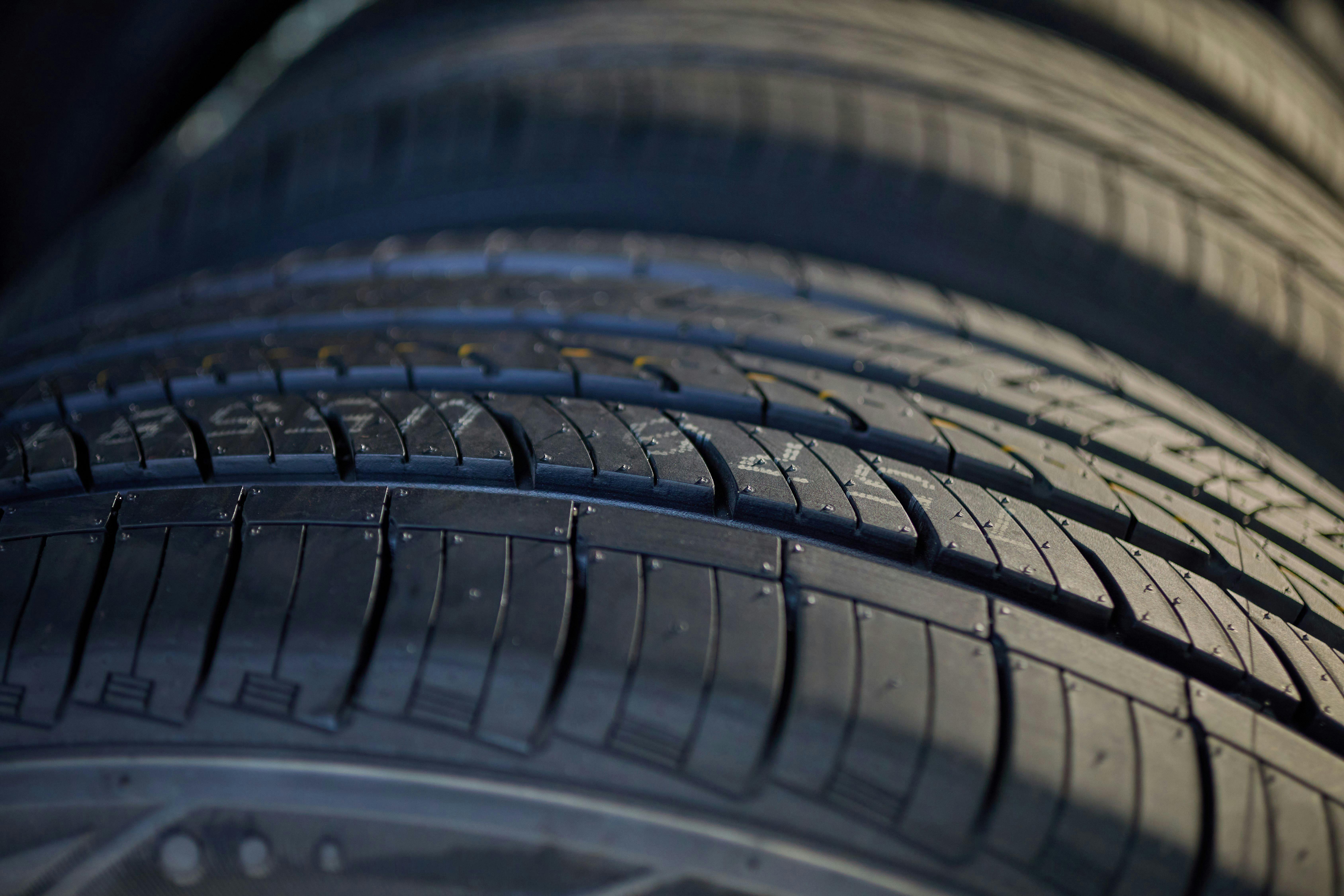You’re driving down the road, and the dreaded Tire Pressure Monitoring System (TPMS) light comes on. You safely pull over to the side of the road to inspect your tires and discover a nail or another object punctured your tire. Ugh! If the tire is salvageable, you can take your vehicle to a tire service professional, where they will inspect and repair the tire (if possible) using a combination of a tire plug-patch. Don’t know what we’re talking about? Let’s dive deeper into the ways tires were repaired in the past, the differences between a tire plug and a patch, and how today’s modern tires require a different approach to repair.
What Is a Tire Plug?
A tire plug is a sticky, flexible piece of rubber that does precisely what the name suggests — it plugs the hole in your tire. Back in the day, most tire punctures were repaired using this method. In addition, most auto part stores would sell the Do It Yourself (DIY) tire plug kit, which includes the plug, a tool to insert the plug, and a reamer tool with raspy edges.
So, how does a tire plug work? First, the puncture in your tire is located. Then, the reamer tool is inserted into the hole where it is then moved in and out of the hole several times. This process helps enlarge the puncture and clean out debris, ensuring the rubber plug fits securely. After that, a rubber plug is inserted into the eye of the plug insertion tool, and adhesive is applied. The tool (along with the plug is inserted two-thirds of the way into the puncture location and is then quickly pulled back out to seal the hole. The plug insertion tool will come out, but the plug will remain in the hole. Any excess plug material protruding from the tire’s surface is then trimmed off using a razor blade.
When to Use a Tire Plug
Back in the day, tire plugs were the go-to choice for tire repair. But today, it’s not considered a viable long-term repair option. Why? It only addresses the puncture itself, and there could be internal tire damage as well due to driving with low tire pressure that needs to be inspected. Plus, a plug can degrade or become loose over time, potentially leading to another leak.
What Is a Tire Patch?
A tire patch is a thin, flexible patch of rubber that’s adhered to the inside of your tire over the punctured area. To install, your tire service professional must first remove the tire from the rim to access its inner liner.
How does a tire patch work? Your tire service professional will dismount the tire from the rim, locate the puncture, and use a tire reamer to clean and roughen up the hole to allow the patch to bond more securely. Then, they will apply adhesive to both the patch and the cleaned area. After it’s dried to the touch, they will install the patch into place to seal the puncture. They will then install the tire onto the rim and inflate the tire to its proper psi.
When to Use a Tire Patch
Generally, a tire patch is more durable than a tire plug. However, just like with a tire plug, using a tire patch by itself is not recommended to repair a tire. A patch can seal the puncture hole, but it doesn't address potential internal damage that the tire may have sustained when it was punctured. This internal damage can lead to a blowout or other serious issues while driving. Additionally, the patch may not hold up under high speeds or under the weight of the vehicle over time.
How Are Tire Plugs and Patches Used in Tire Repair Today
Today, with modern technological advancements, most service providers use a plug-patch combination to repair a punctured tire. Essentially, it’s a patch with an integrated plug where the technician pulls the plug portion through the puncture from the outside while the patch portion adheres to the inside of the tire. This method combines the best of both worlds — the plug’s immediate sealing benefits with the patch’s long-lasting security.
Of course, your tire must be repairable for a technician to use this plug-patch combo. Typically, your tire can be repaired if:
- The puncture is ½” away or more from the edge of the tire tread where the steel belt begins. The tire’s sidewall and shoulder can’t be repaired.
- The puncture is less than ¼” in diameter.
- The puncture doesn’t overlap a previous repair.
With these technological advancements, the cost of tire repair services has risen, along with tire prices, as they become more advanced. Still, a tire repair is generally less expensive than a tire replacement, so when you get your tire serviced, you may want to ask the technician if the tire can be repaired because who doesn’t like to save a few bucks?

Visit Your Local Jiffy Lube for Tire Repair Services
To help ensure your tire is repaired safely and correctly, take your vehicle to your local Jiffy Lube® for tire service. A trained technician will remove the tire from the wheel and thoroughly inspect it to see if it’s repairable. If so, they will dismount the tire from the rim, clean the puncture, prep the area around the puncture, and use a plug-patch combo to seal the leak to industry standards. Then, they’ll re-install and inflate the tire to your manufacturer’s specifications. You can count on Jiffy Lube to help keep you and your vehicle on the road.
NOTE: Not all services are offered at all Jiffy Lube service centers. Please call ahead or check jiffylube.com to ensure the service is available at the Jiffy Lube location near you.